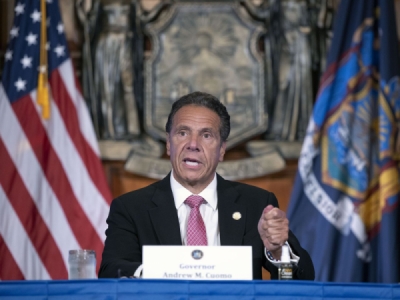
Posted on August 2, 2020
STATEN ISLAND, N.Y. — Commuting in New York City could get a whole lot more expensive.
On Tuesday, Governor Andrew Cuomo warned New Yorkers that without significant financial aid from the federal government the MTA will be forced to raise bus, train and subway fares, as well as bridge and tunnel tolls, to make up for lost revenue as a result of the coronavirus (COVID-19) pandemic.
“If the MTA does not receive funding, if the state doesn’t receive funding — then we can’t provide our funding to the MTA. That will raise fares for the New York City subway system, tolls on bridges and the fares on the Long Island Rail Road. The funding has to come from somewhere,” Cuomo said.
After blasting Republican Senate members for introducing a new bill that does not provide state local aid funding, Cuomo placed the onus on members of the House and New York’s Senators Charles Schumer (D-NY) and Kirsten Gillibrand (D-NY) to oppose the Senate bill and pass legislation that provides federal relief to New York.
“If Washington plays politics, if the House members don’t stand firm, if our two Senators, Schumer and Gillibrand, don’t stand firm — you’re going to see New Yorkers paying a higher subway and Long Island Rail Road fare,” the governor said.
Cuomo’s warnings echoed the sentiments of top MTA officials who have repeatedly stated at recent board meetings that without additional federal funding the agency will be required to consider fare and toll increases, layoffs and service reductions.
“To help balance our books, everything is on the table, including wage freezes, delays and reductions in the capital plan, fare and toll increases, deficit financing and even cuts to personnel and service as a last resort,” said MTA Chairman and CEO Pat Foye. “We do not wish to implement any of these actions, but the perilous state of our finances may force our hand.”
The MTA is anticipating a massive $16.2 billion deficit through 2024, with the agency currently projecting a $3.8 billion loss in 2020, a $6.4 billion loss in 2021, a $3.2 billion loss in 2022 and $1.4 billion losses in both 2023 and 2024, when ridership is finally expected to be back near pre-pandemic levels.
Cuomo went on to discuss the funding needs of the Port Authority of New York and New Jersey, who could be forced to curtail major ongoing infrastructure projects without an infusion of federal aid.
“If they don’t provide funding to the Port Authority, you will see construction slow or stop at LaGuardia Airport and JFK Airport,” Cuomo said. “There is nothing conceptional or abstract to this exercise. It is going to have a dramatic practical effect on New Yorkers. And I want New Yorkers to know the consequences. Because I want our federal representatives held accountable.”
In May, the Port Authority requested $3 billion in federal assistance to offset revenue losses and maintain the agency’s current capital plan, which is slated to create 100,000 jobs and spur $20 billion in public and private spending over the next five years.
“Given the massive decline in traveler volumes, Congress must provide the Port Authority with direct financial assistance to offset its massive revenue losses to ensure critically important infrastructure projects can move forward,” Rick Cotton, Port Authority executive director, said at the time.
The funding is needed to offset the monumental revenue losses the agency has experienced in recent months as a result of coronavirus-related travel restrictions.
After strict state and federal travel restrictions were enacted in the second half of March, passenger volumes at the region’s airports, crossings and commuter rails dropped drastically compared to last year’s totals, according data provided by the Port Authority earlier this week.
The agency compared average weekday facility use for the week of March 30 to April 3, during the virus’ initial peak, against average weekday use in March 2019.
What the Port Authority found was that, during the aforementioned time span, passenger volumes at the region’s airports were down 95.9%, ridership on the PATH commuter rail was down 94.3% and vehicle volumes at the agency’s bridges and tunnels were down 61.3%
“Our region cannot afford, now, to walk away from these jobs or these billions of dollars of construction spending our capital plan would inject into the region and the country,” said Kevin O’Toole, Port Authority chairman.
Source: silive





